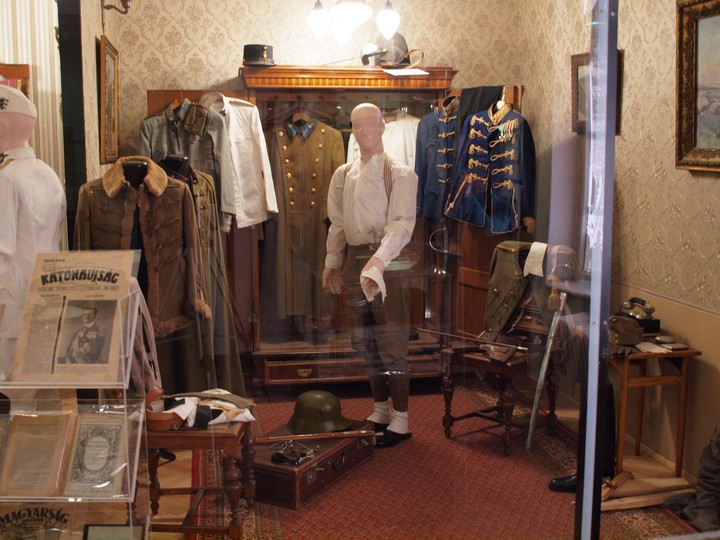
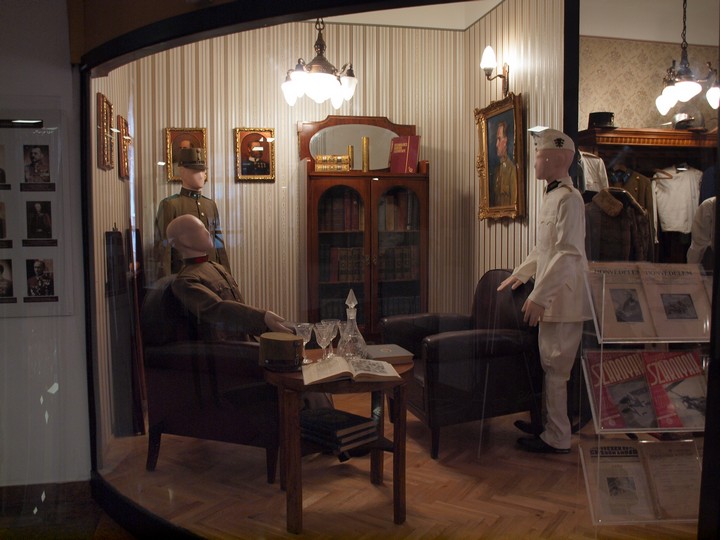
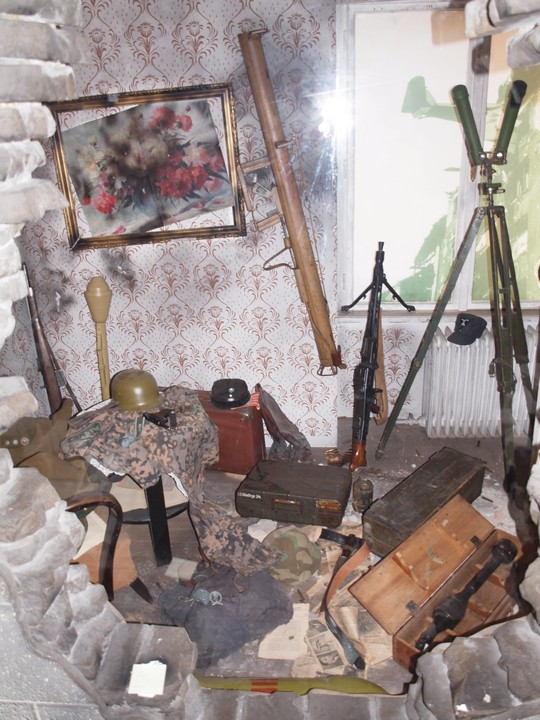
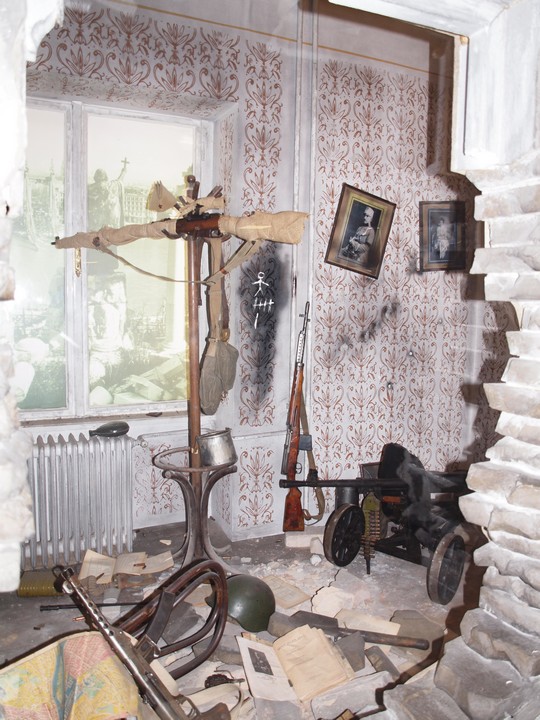
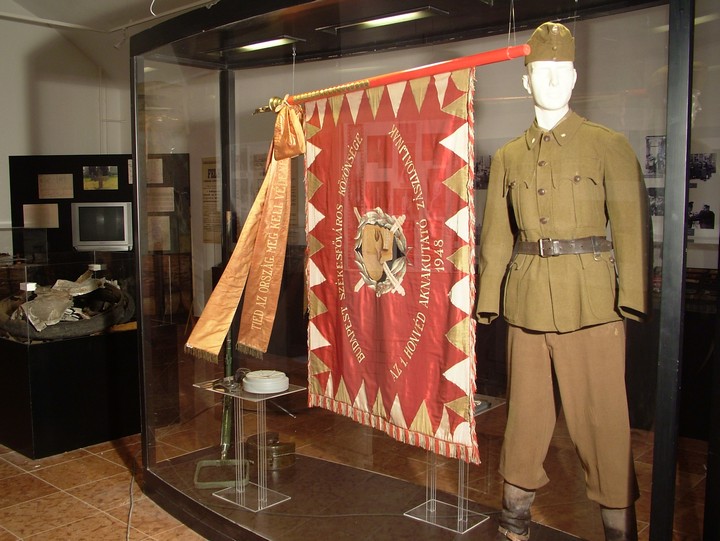
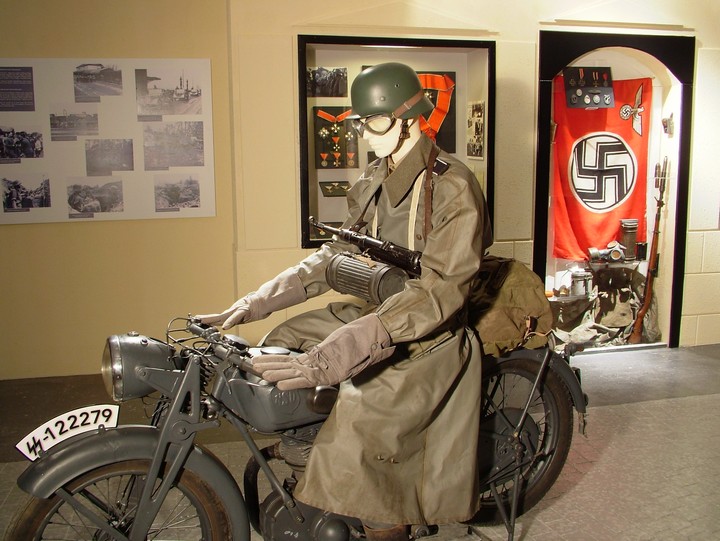

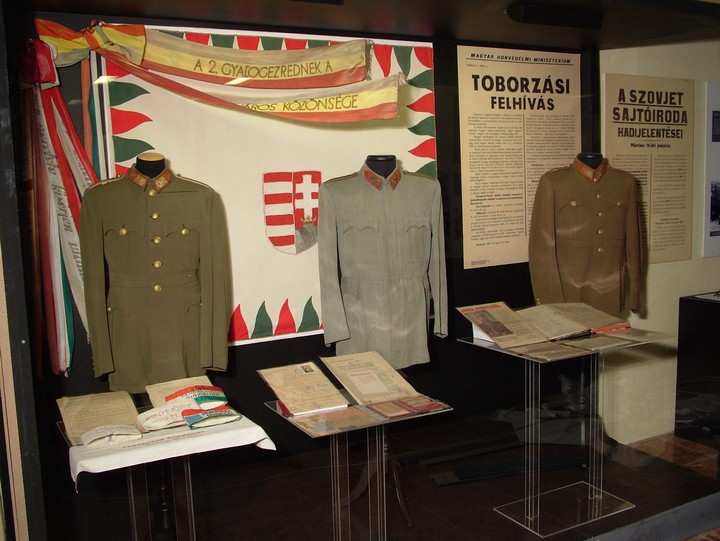
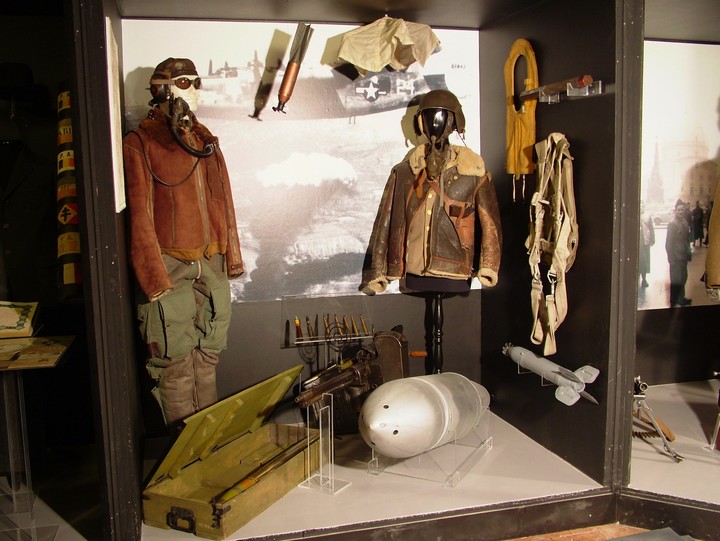
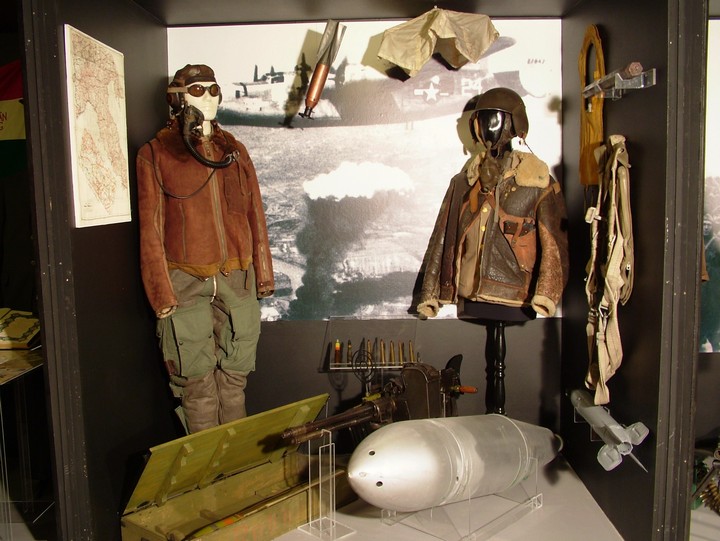
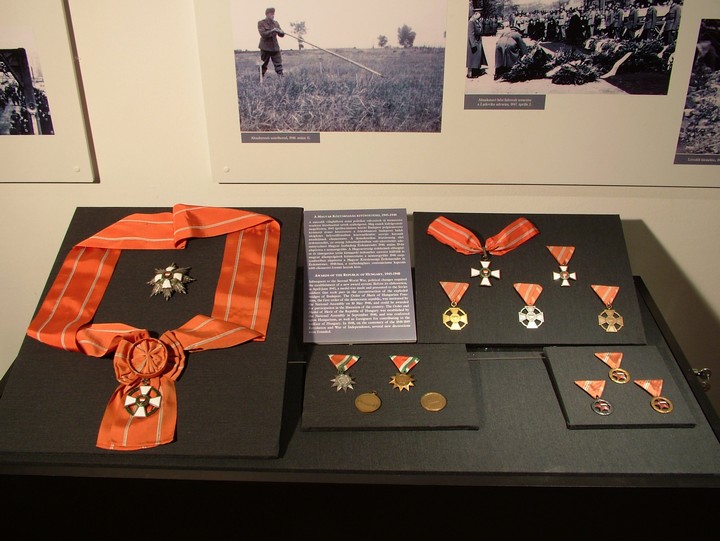
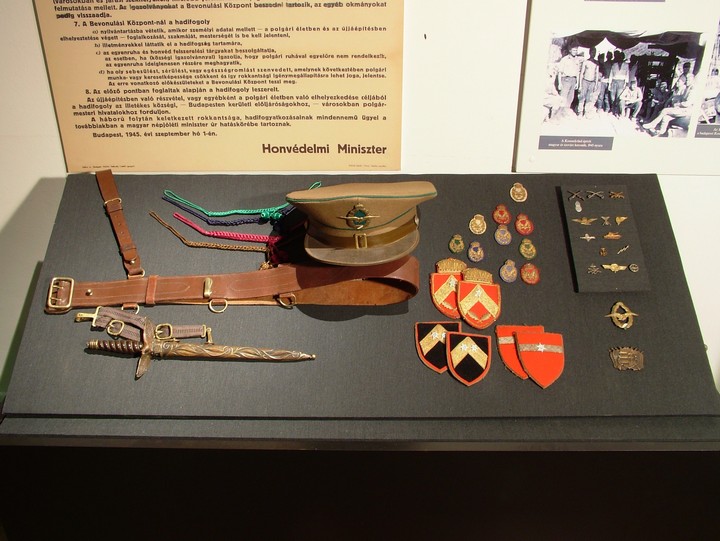
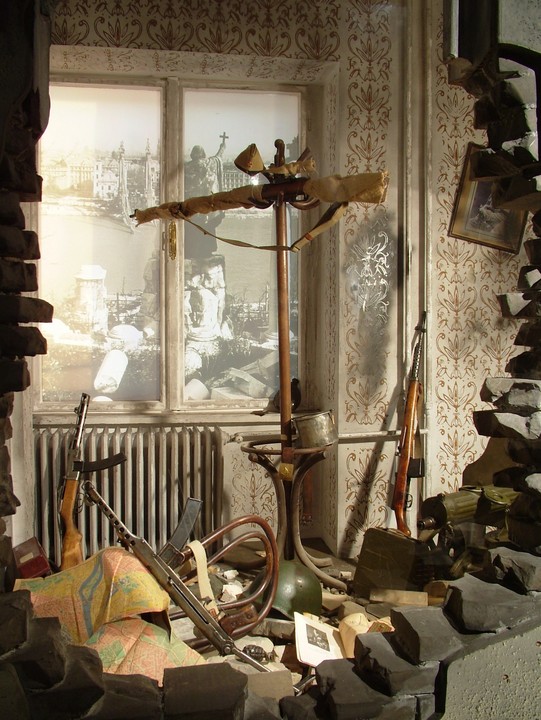
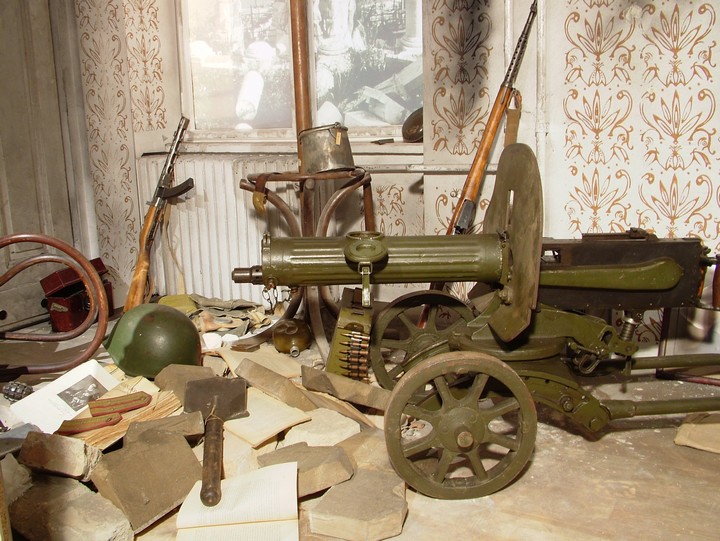
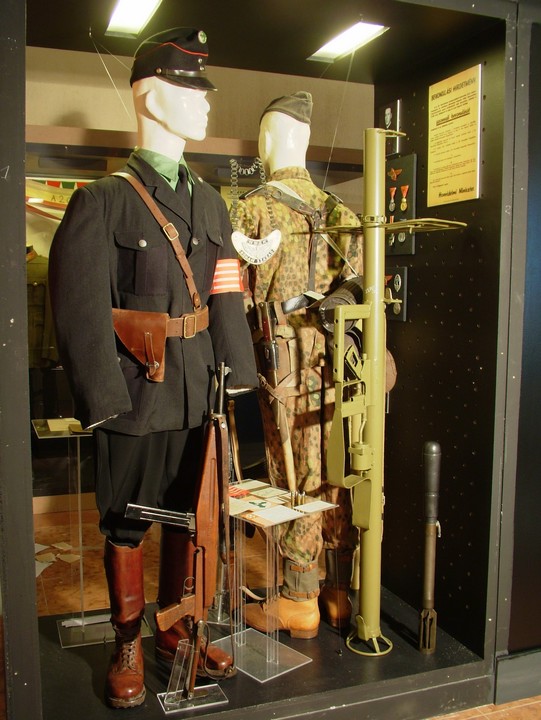
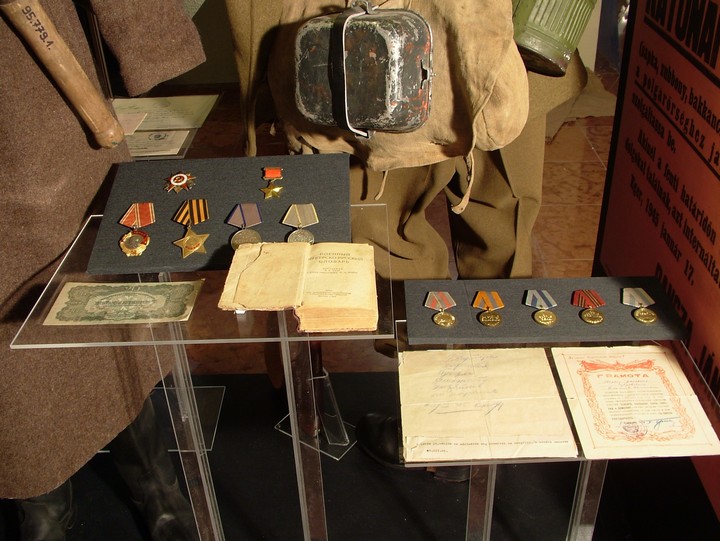
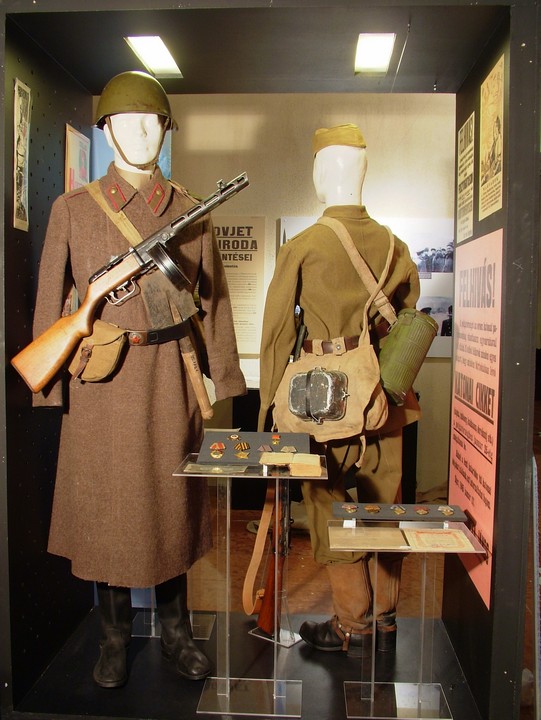
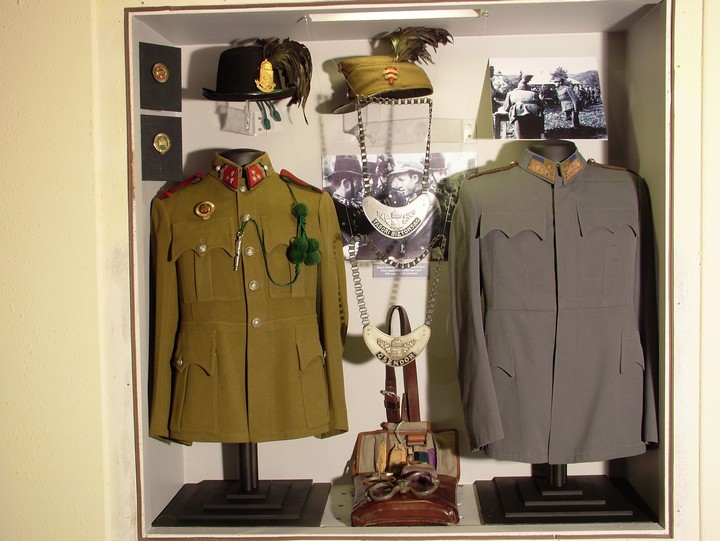
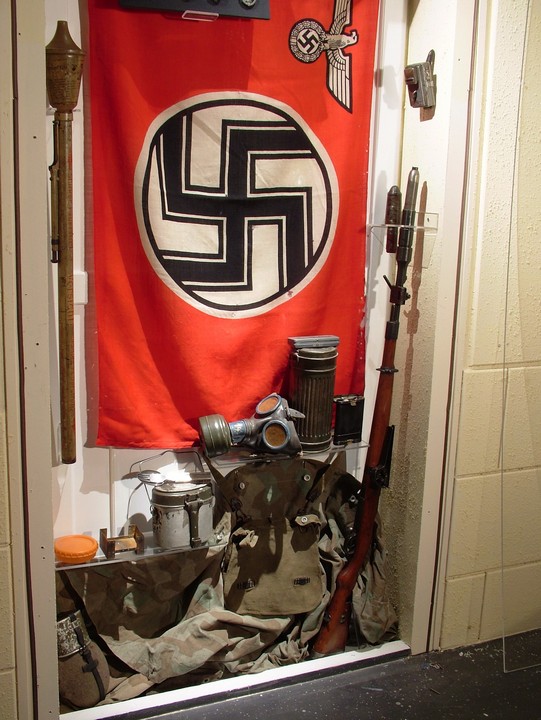
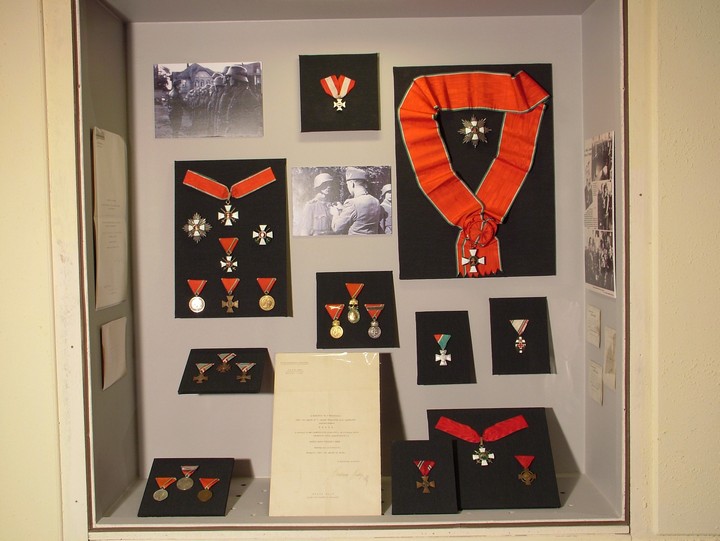
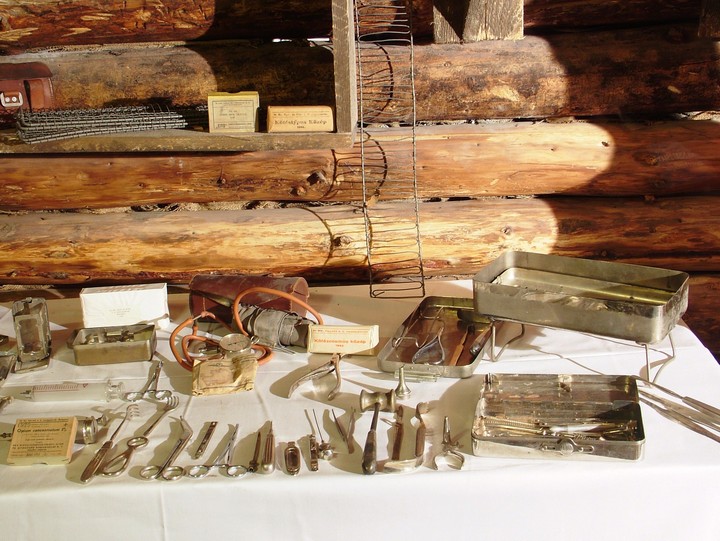
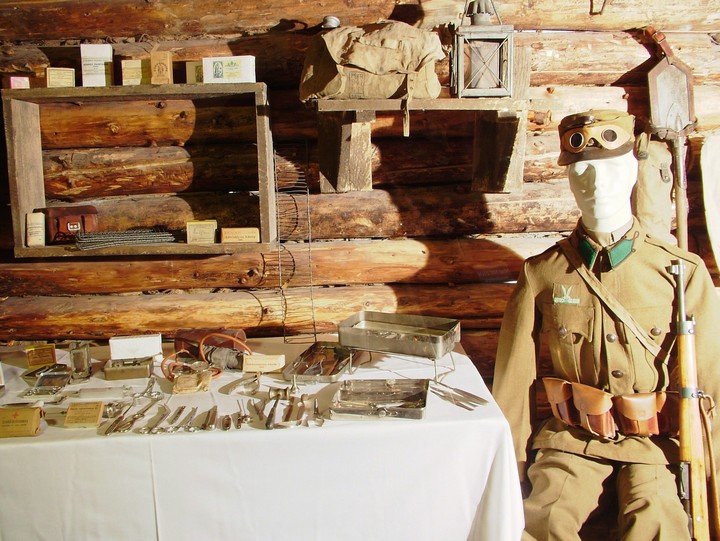
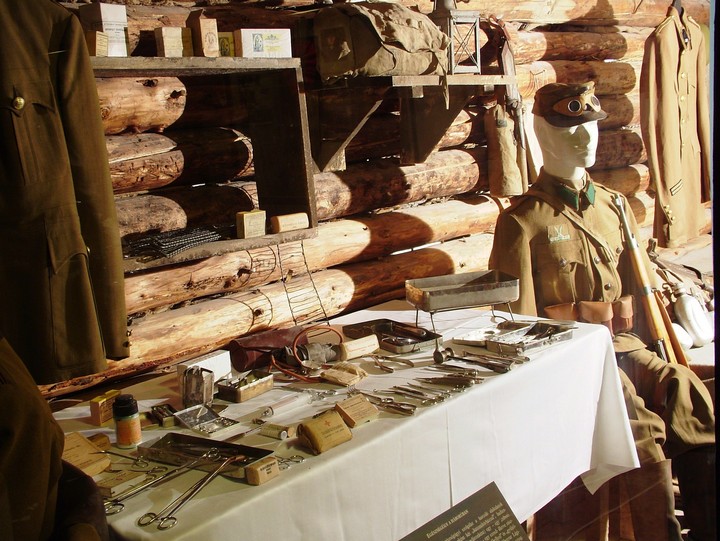
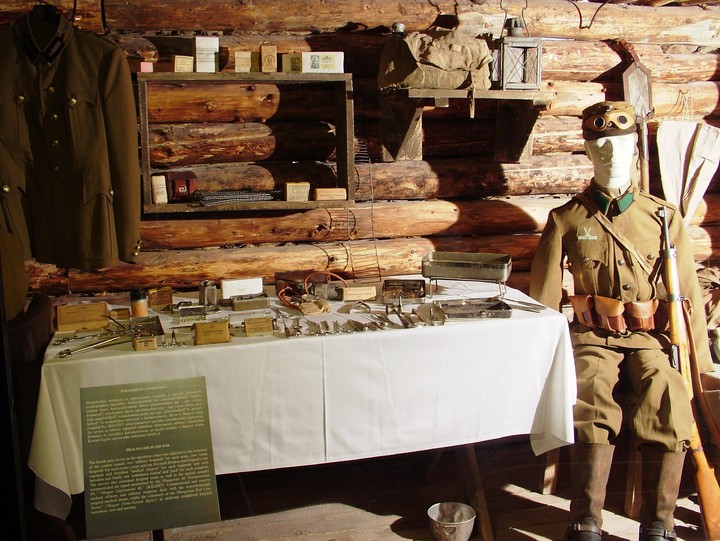
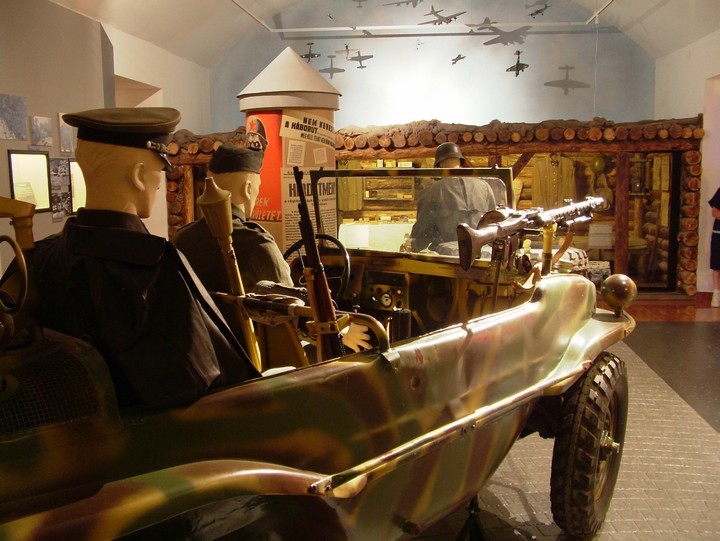

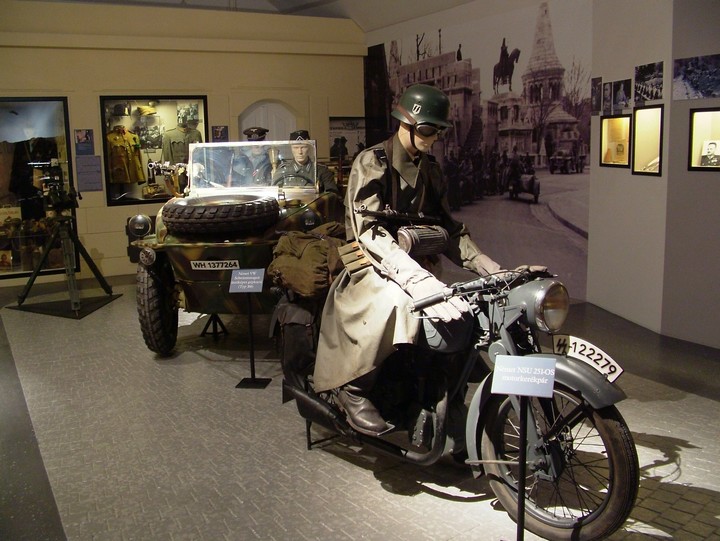
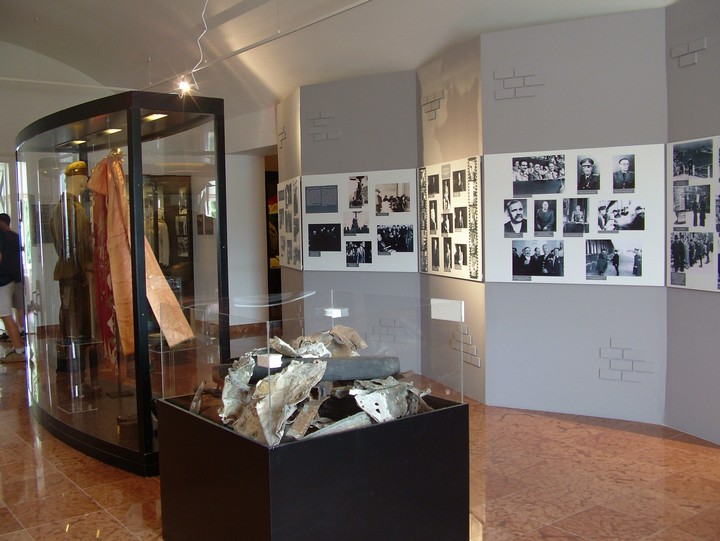
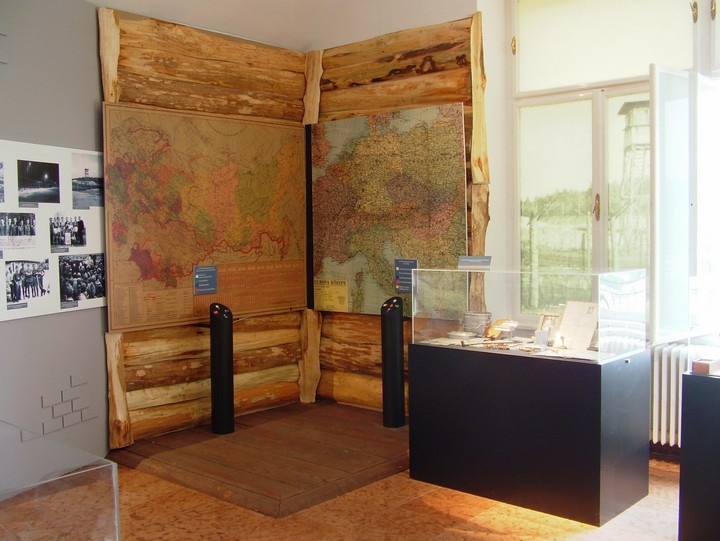
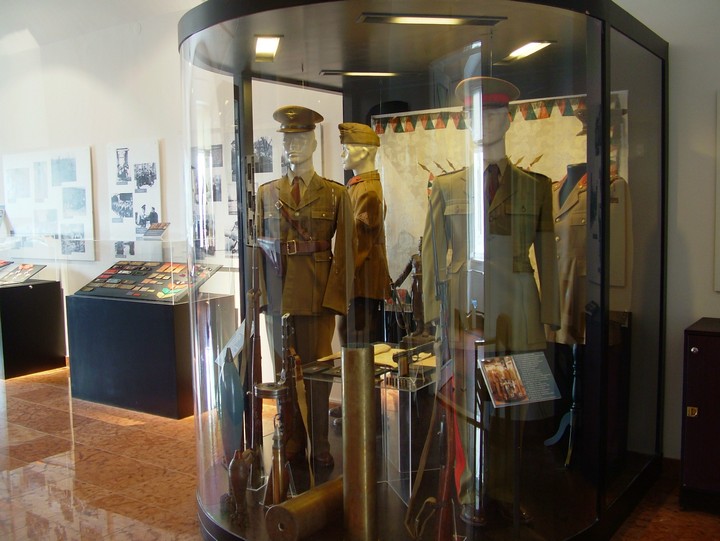
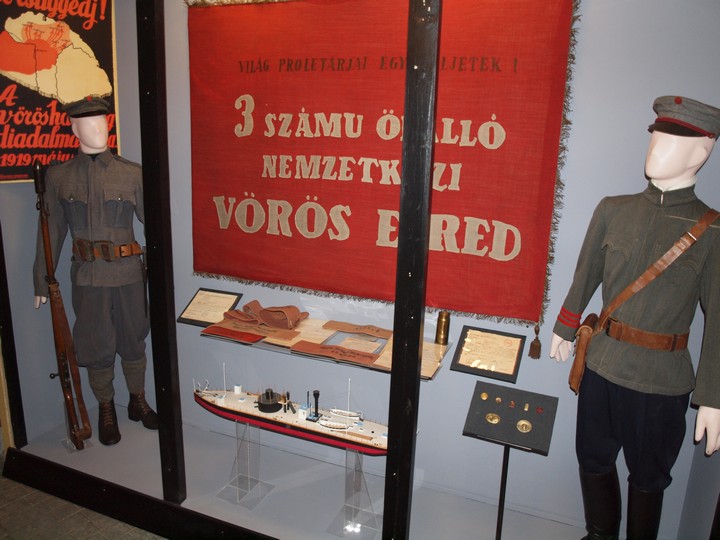
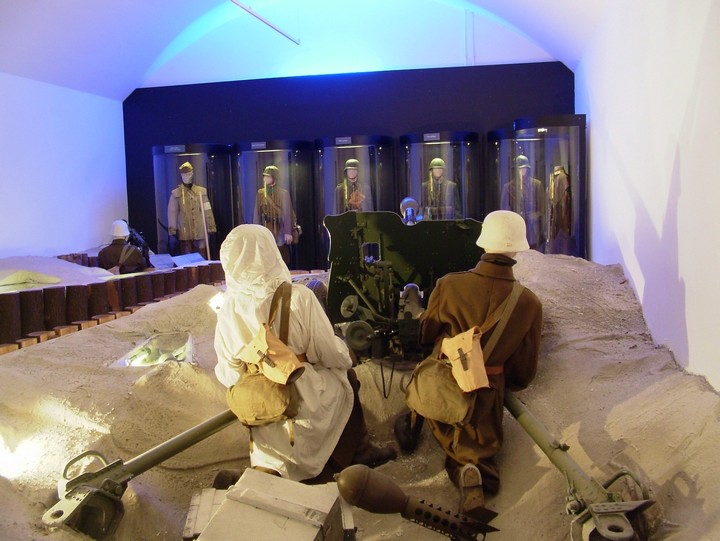
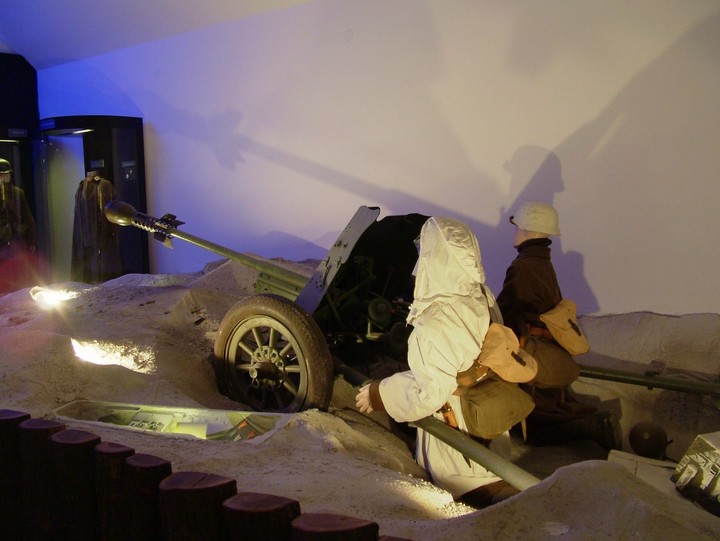
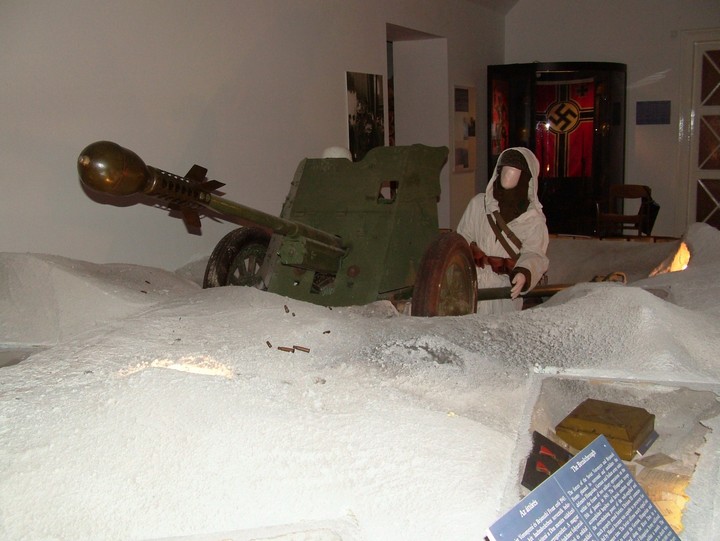
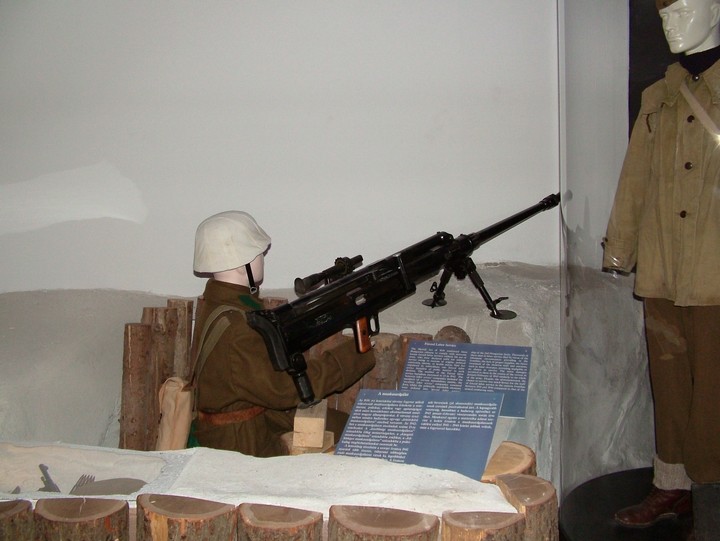
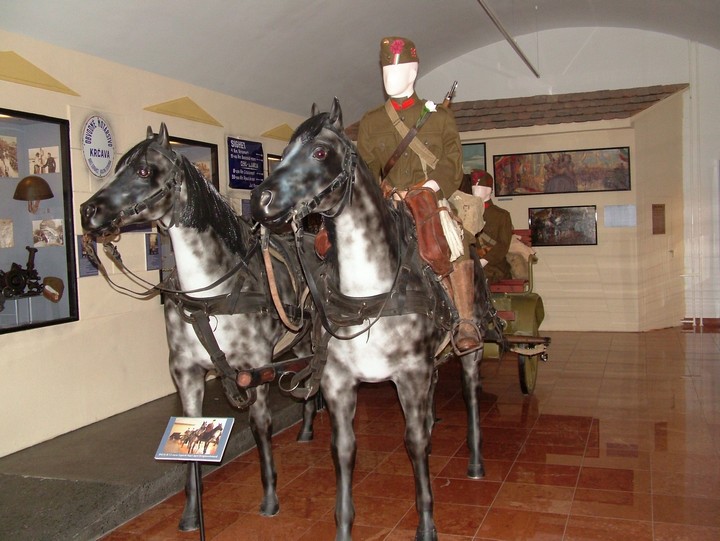
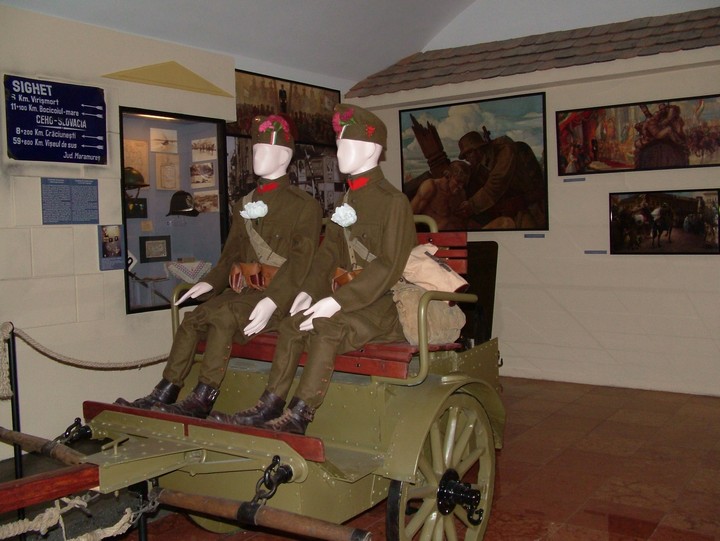
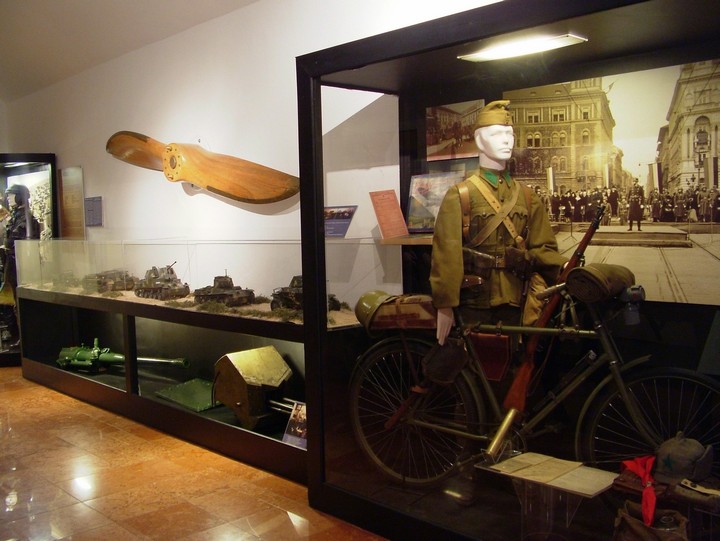
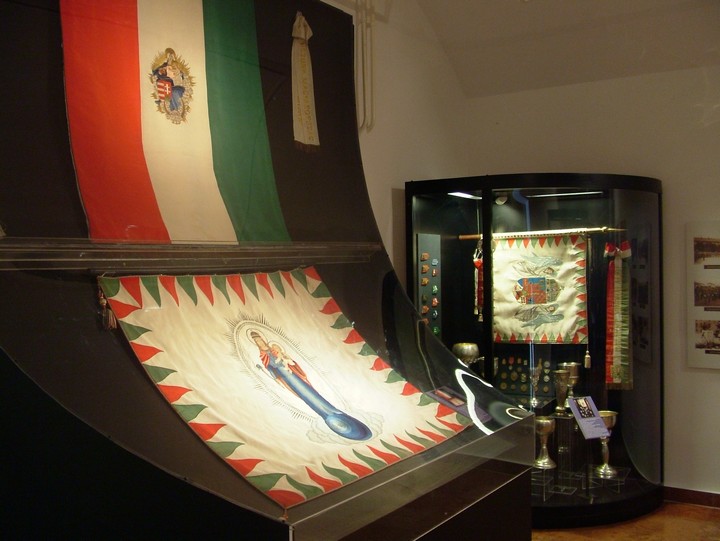
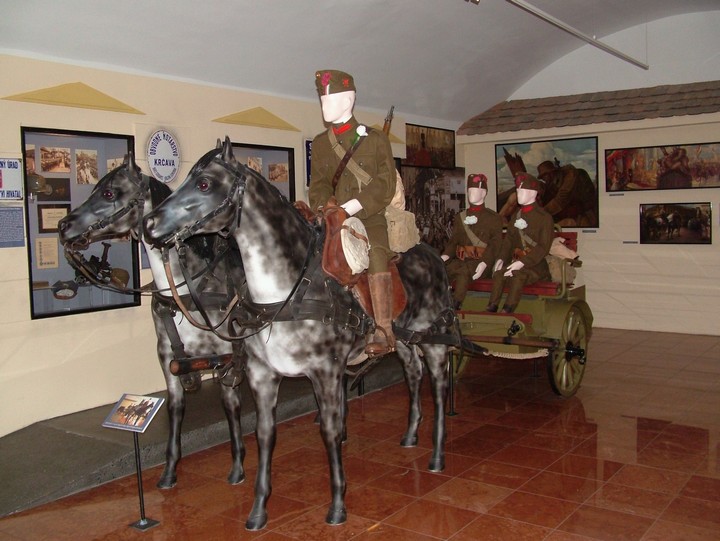
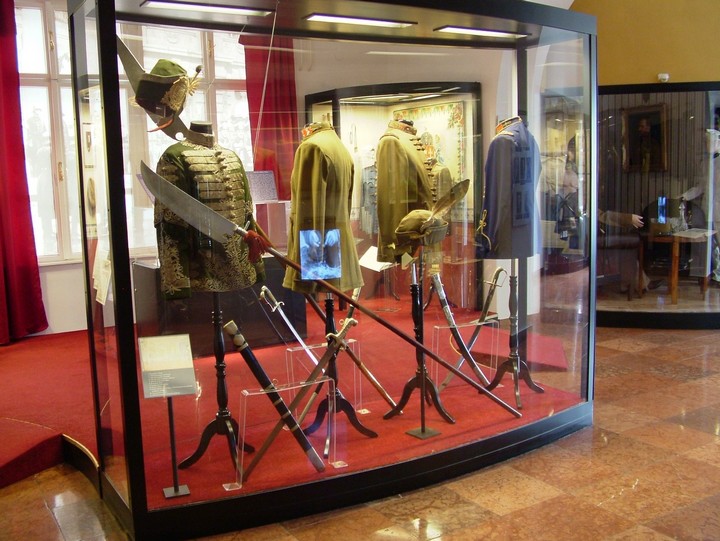
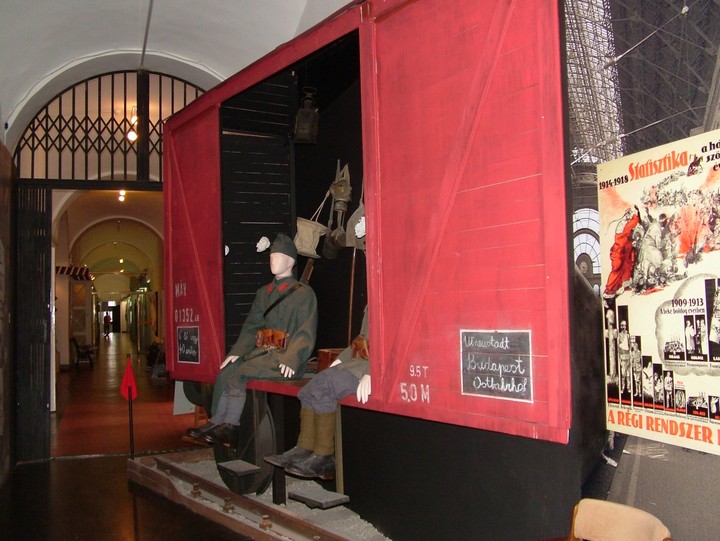
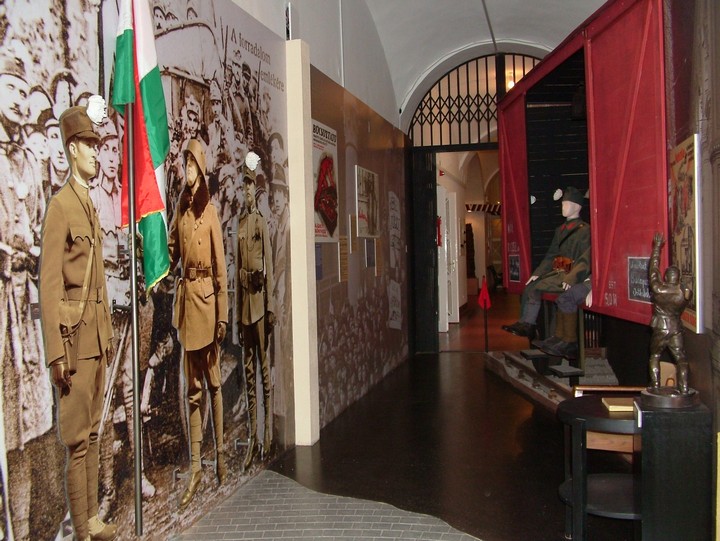
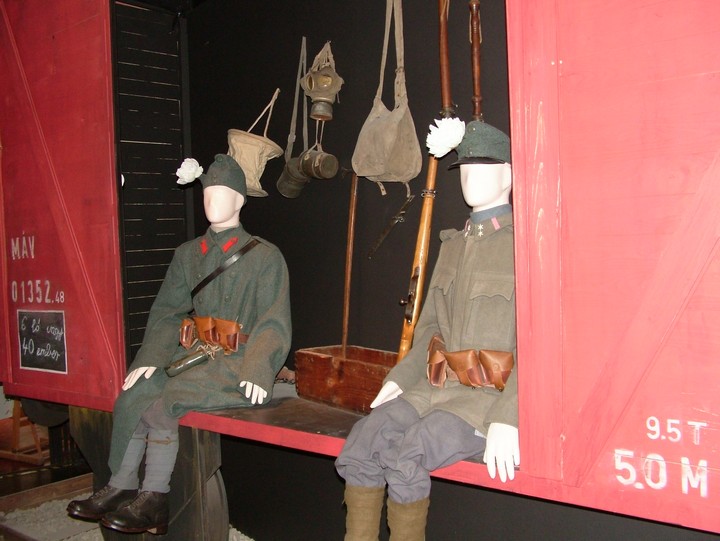
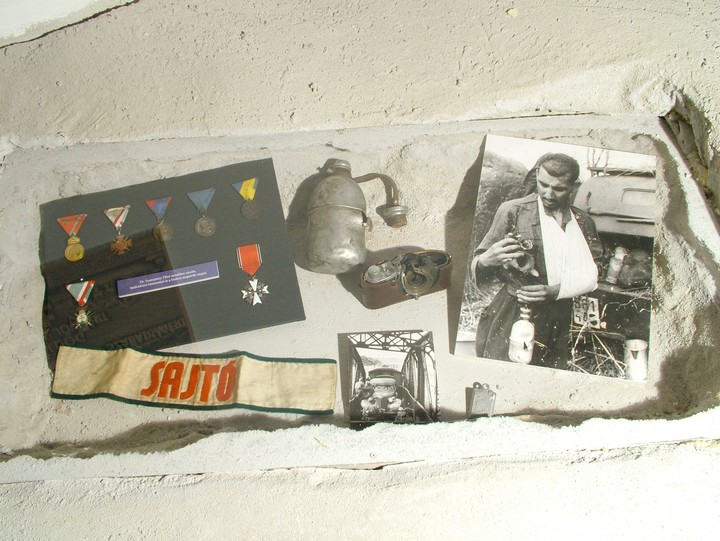
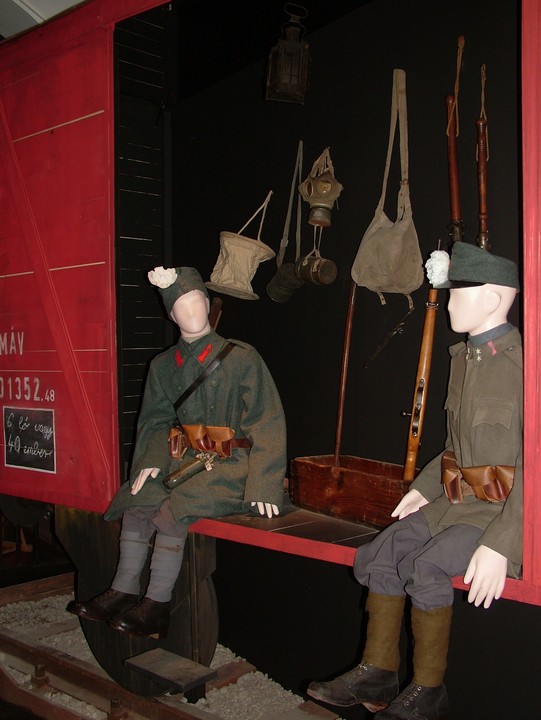
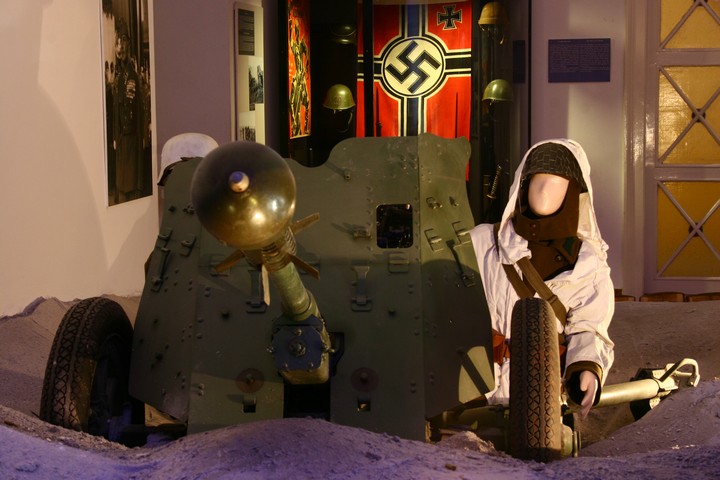

From the Piave to the River Don – From the Don to the Danube.
The Military History of Hungary, 1918–1948
The permanent exhibition guides us from the River Piave to the River Don. Among the two rivers became symbols the first one is the symbol of the Italian Front of the First World War, meanwhile the second one is the symbol of the high casualties suffered during the Battle of Stalingrad. From the military history of Hungary the period between November 1918 and January 1943 is being presented here. This era following the First World War with its quarter of a century’s revolutions, counterrevolutions, reign of Regent Miklós Horthy, another world war is one of the most turbulent and controversial period of our nation’s history.
With the help of artefacts, documents, photographs we can browse among the era’s political events, personalities and in the interesting world of the handheld, light and heavy weaponry, armoured vehicles and aircraft used by the Royal Hungarian Armed Forces, the Axis and the Allies.
The exhibition starts with the imposing visual element of the returning soldiers from the front at the end of the First World War. Strolling on an imaginary pavement’s cobblestone we can watch the quick events of the “Aster Revolution” and the following 133 days of the Soviet Republic of Hungary closely through a rich collection of photographs. Whilst seeing the models of the famous armoured train and the monitor ship Lajta, we can have a glimpse of the wall posters typical of the era, commemorating the casualties of the red and white terror and the still expressive artefacts of the prisoners-of-war of the First World War.
We can examine the huge “Trianon-flag”, which according to tradition were hanged on one of the flagpoles between the two Trianon Palaces in Versailles on 4 June 1920. At the official flag lowering ceremony an American officer who lowered the flag with his own hands supposedly said: “Hungary is done!”
At the same time we can see the beautiful dresses of the Royal Hungarian Guards and Crown Guards, who were constant representative participants of state and military protocol events as a military organization.
Having a glance at the interior design we can see a section of an officer’s mess and a living room representing the everyday life of officers bearing in a modern sense interesting and sometimes astonishing artefacts.
A separate display is dedicated to those who are interested in medals and orders. After 1920, there was an opportunity to institute an independent system of orders, decorations and medals in Hungary, which primarily consisted of new elements, but it also preserved the phaleristic traditions of the Austro–Hungarian Monarchy. The orders and decorations awarded prior to 1918 could be worn together with the new honours, which displayed the Hungarian national and state symbols. The Hungarian Order of Merit, Grand Cross, the Hungarian Cross of Merit, 1st Class and the Hungarian Great Golden Medal with the Holy Crown are worthy of seeing.
We get to know the flags used in that era, the so-called “irregular regulars” then the ones based upon the decree on flags of December 1938.In the exhibition artefacts of the particular organisation of Hungarian history, resembling an order of knighthood, the Order of Vitéz can be seen. Part of the Order of Vitéz uniform is displayed: a ceremonial dress jacket and a flag of a branch of the Order of Vitéz from 1930, furthermore the Ceremonial sword being used up to date. (Property of György Thurzó)
The military provisions of the Treaty of Trianon defined the headcount of the Hungarian armed forces in 35,000. The number of officers was limited to 1,750 and that of NCOs was restricted to 1,313. Only recruitment was allowed to supplement the army headcount. A higher headcount indispensably important for the defence of Hungary’s territory was ensured by “secret troops”, i.e. the Customs Guards, the Gendarmerie, the Border Guards, the River Police and police reserves. There is a worthy amount of space to represent the uniforms of these organizations with the paramilitary organizations of boy scouts and Levente Youth.
The Hungarian armed forces were mostly supplied by the national defence industry, to which the fiscal foundations and other conditions were assured by the so-called “Győr Programme” which was announced in 1938 and aimed at rearmament. The intellectual background to the Hungarian defence industry was provided by excellent engineers, for instance weapon designers Rudolf Frommer, Ferenc Gebauer and Pál Király, vehicle engineers Dezső Winkler and István Juhász.
The exhibition objectively shows the First and Second Vienna Awards and the remilitarization of the “returned” territories of Upper Hungary, Sub-Carpathia and Northern Transylvania due to these Awards.
Hungary was one of the few countries of the period which was capable of independent aircraft and tank manufacturing. Unfortunately most of these vehicles can be seen only on photographs or by the representation of models – placed in the exhibition: aircrafts like the “Héja”, Messerschmitts, Ju-52 transports, Toldi and Turán tanks, Nimród tank-destroyer and self-propelled anti-aircraft machine cannon, Csaba armoured car, the Zrínyi self-propelled gun and the Botond all-terrain squad truck.
An original M1915/31 7.5cm mounted mountain cannon with train can be seen in the exhibition.
The next hall deals with the Royal Hungarian 2nd Army’s bitter retreat through the Russian snowfields. Also there is a sample of the weaponry and uniforms of the German, Italian and Allied Forces.
The exhibition is open to the public since 25 May 2006 on the 1st floor of the Museum



